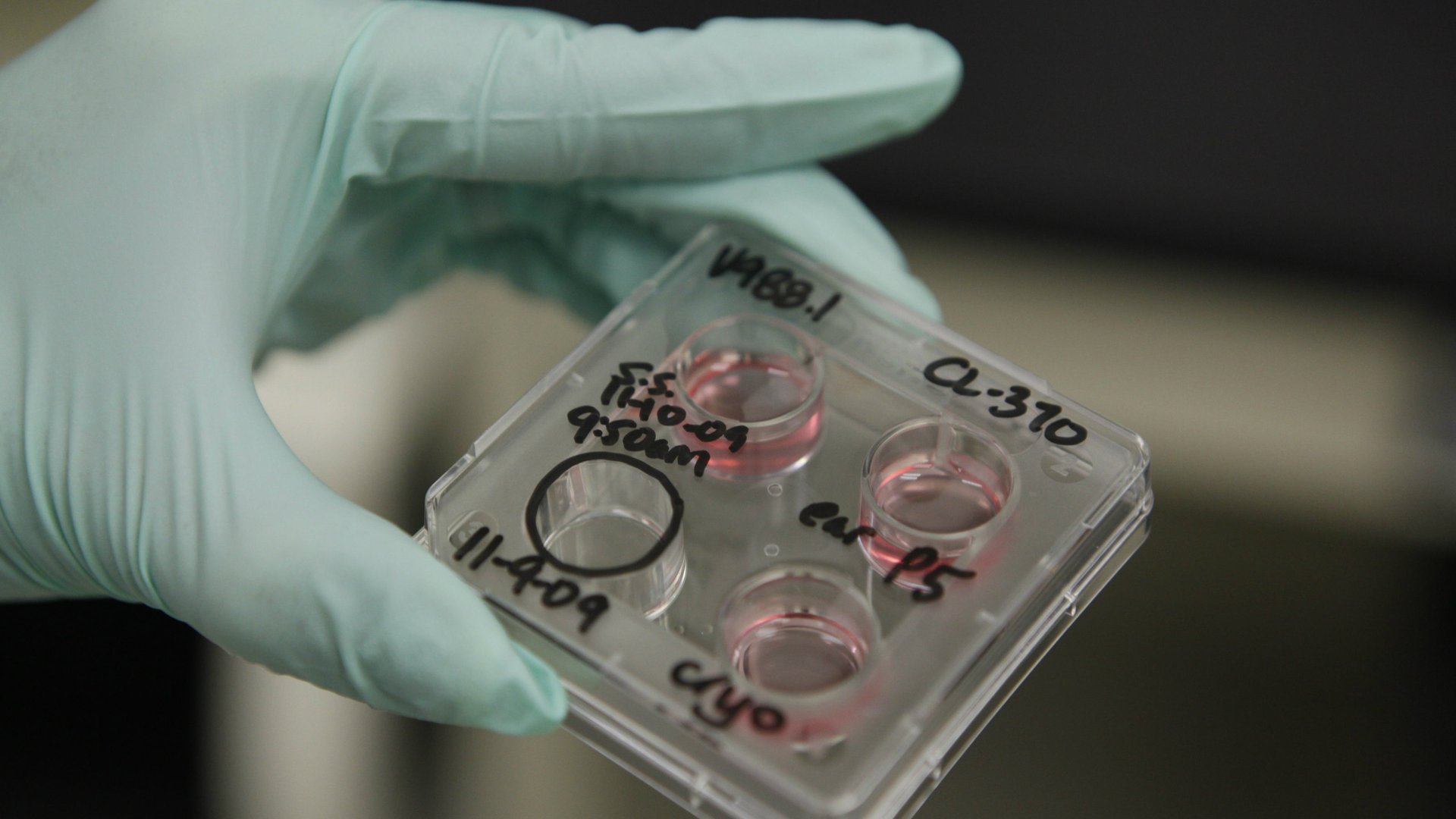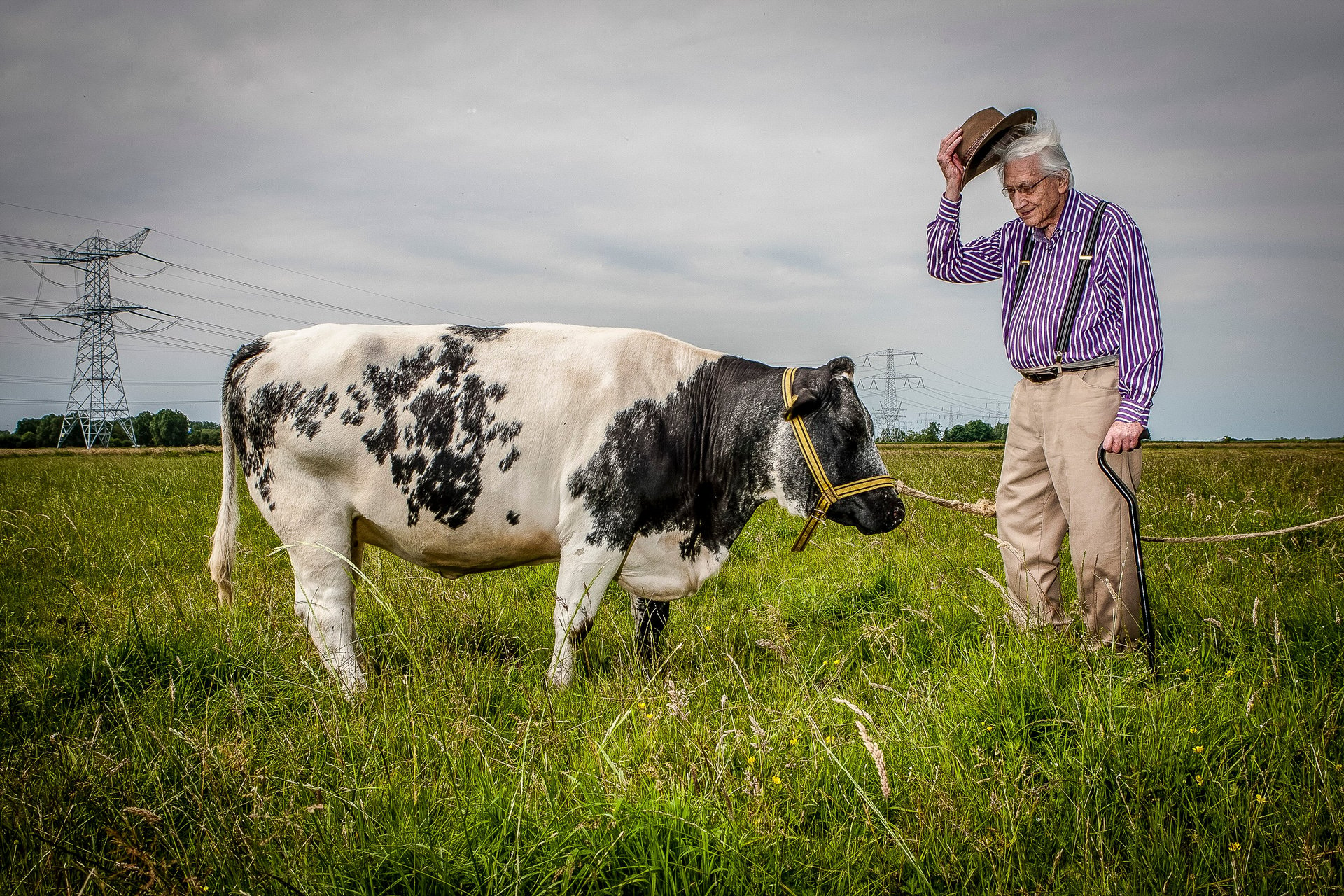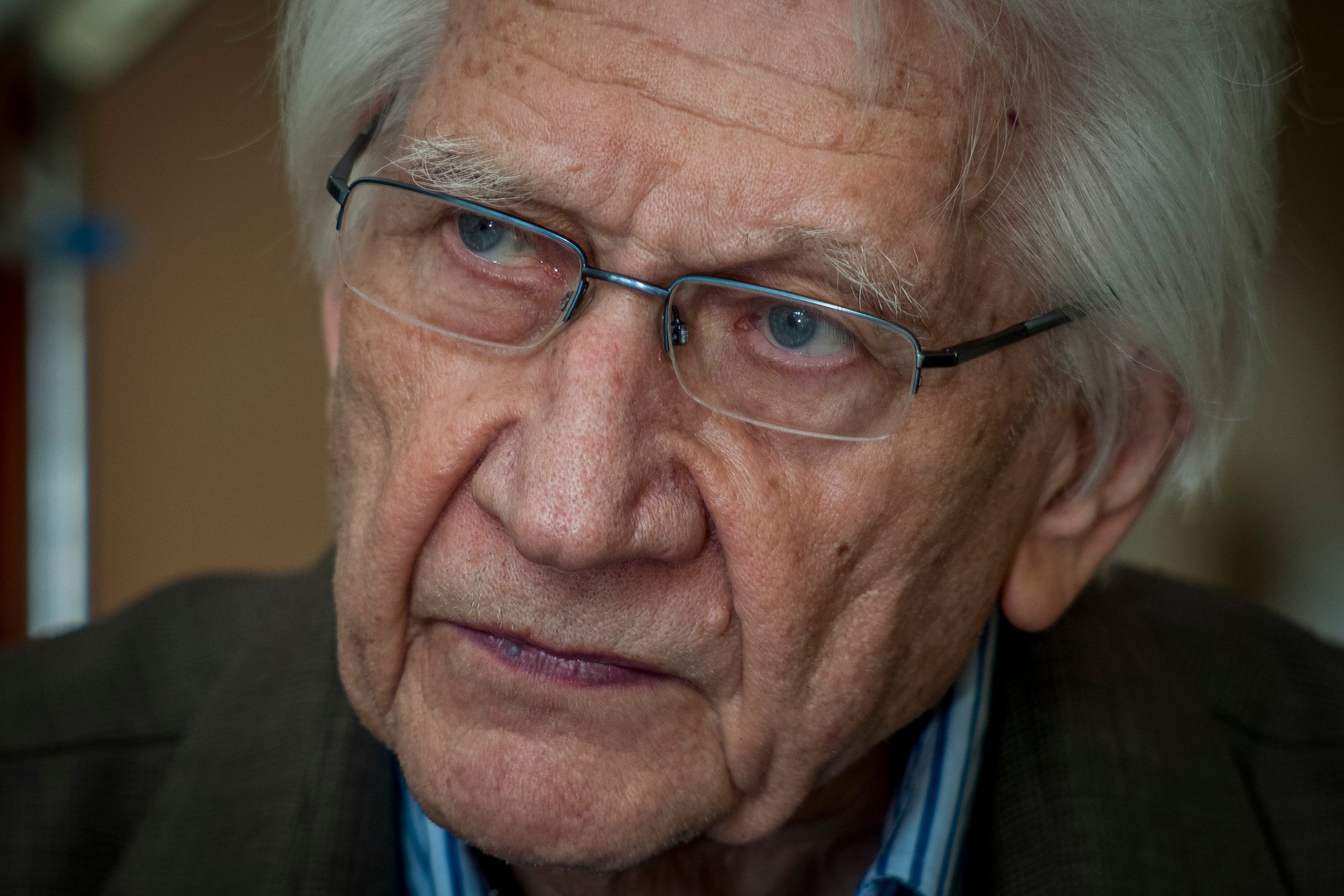The idea for lab-grown meat was born in a prisoner-of-war camp
The phone call was as unexpected as the American accent at the other end of the line. And when she hung up a few moments later, Ira van Eelen had to stop to catch her breath.


The phone call was as unexpected as the American accent at the other end of the line. And when she hung up a few moments later, Ira van Eelen had to stop to catch her breath.
More than two years had passed since the 53-year-old Dutch woman had spoken that in depth to anyone about her father’s work. She’d more or less given up on the possibility that her father’s idea—more than an idea, a lifelong passion into which Ira had been drafted into pursuing over the course of decades of obsession—would ever become a reality. Now, caught by surprise at the tail end of summer, she was being asked to rethink everything.
On the phone was Josh Tetrick, the lightning-rod CEO of Hampton Creek, a San Francisco-based food company valued at more than $1 billion, making it Silicon Valley’s one and only food unicorn. On Sept. 14, Hampton Creek announced it had acquired Willem van Eelen’s original patents for lab-made meat, along with similar intellectual property from Los Angeles business titan Jon Vein. The company also announced Ira van Eelen would become an official advisor to Hampton Creek as it tried to bring her father’s idea to market by the end of 2018, nearly six decades after the original concept first swirled through her father’s head.
Almost overnight Willem van Eelen’s daughter became a minor celebrity in the small sphere of researchers and entrepreneurs that are racing to get lab-grown meat onto the world’s kitchen tables.
The old origins of new meat
“Folks in Silicon Valley think about [lab-made] meat and they think it’s some new thing dreamed up by some teenager in a garage somewhere,” says Tetrick. But really, it’s been decades in the making. “It wasn’t until recently that the greatness of [Willem van Eelen’s] idea was met by a society and set of enabling technologies that could make it real,” says Tetrick.
Willem van Eelen was born in 1923 in Indonesia to a Dutch doctor who had opened a leprosy colony in what was at the time a Dutch colony. At 17, he enlisted to fight in World War II, during which he was captured by the Japanese and sent to multiple prisoner-of-war encampments across Indonesia. There he was forced to work, often building airstrips, without much food, slowly deprived of calories and inching toward the edge of death. The lessons he learned, his daughter explained to Quartz, would go on to influence how he perceived the world after the Japanese surrendered and he moved to the Netherlands.

He entered medical school in 1948. As Ira van Eelen recounts it, one day during her dad’s first year, he came across a group of researchers in the laboratory using stem cell technology to grow cells in a tank, hoping to create new skin for burn victims. His first-hand experience with starvation sent his mind immediately to one question: Can this be used for food?
“The only thing I saw was a piece of meat,” Ira van Eelen recalls him saying. It was a sight that launched a decades-long struggle to make lab-grown meat a reality. Much of his time was spent wrangling researchers, hoping to convince them of his proposal’s value. Willem van Eelen did manage to establish relationships with a handful of scientists who shared his interest in lab-grown meat. Still, finding the money to conduct the necessary research proved difficult. “Funding at that time only came from private investors, and private investors only pay for something if they get money back,” says Ira van Eelen.
He spent years frustrated at the slow pace of development. What he saw as a clear path to feed the planet sustainably never transformed into a serious push by the scientific community.
In 1975, when Ira van Eelen was still a young girl, her mother died suddenly from ovarian cancer. Incensed that medicine was unable to save her, Willem van Eelen fell into a deep depression. He threw himself deeper into his work trying to use stem cell research to make a modern meat product—fueled by an obsession with immortality he’d come to embrace following the death of his wife.
“He lost the mother of his child,” she says, and “he got into this total belief that dying is something that you shouldn’t do.” He would later tell one business partner that he thought he would live to be at least 120.
As she watched him age, Ira van Eelen says, her father became increasingly aware of the years he had left to try and bring a lab-grown meat product into fruition. He would talk with her about his work non-stop, sharing his vision and ideas, seeking her input for a technological advance the two could only imagine.
“We’ll either be the best of friends or the worst of enemies”
Willem van Eelan would show up uninvited at the offices of business people, pressing them to join his pursuit of the technology. At the time, it was seen as a risky endeavor. Stem cell research in the Netherlands was almost exclusively considered a medical technology, and using it to make food was a tough sell.
Still, he stayed committed, and the dedication paid off: By the early 1990s, he’d raised close to $750,000 from several investors, and in 1994 filed for his first of several patents. Not long after, he gave Jon Vein, the former COO of Artists Management Group and future member of Hillary Clinton’s 2016 National Finance Committee, a call.
Vein remembers picking up at his home early one morning in Los Angeles, and on the other line hearing what he thought at the time was a thick German accent.
“Is this John Wayne?” the caller asked.
“Who is this?” Vein replied, still groggy.
“My name is Willem van Eelen, and we’ll either be the best of friends or the worst of enemies.”
Van Eelen had found Vein’s name attached to recently filed lab-grown meat patents. They became friends, and teamed up to try and get their ideas off the ground. Van Eelen eventually sold his patents to Vein hoping that consolidating their intellectual property would advance the concept. Together, the pair reached out to researchers and financiers across the following years in an attempt to get more academics involved in the project.

Still, even in the early 2000s, the appetite to invest in the space was chilly, at best. They were unable to find partners who could make the concept a reality. As Van Eelen, got older, it began to haunt him. In one of the last video recordings of Van Eeelen, he grows very quiet at one moment, then explains to the camera that he needed to survive to do “this very important work.”
About a year before he died, Willem van Eelen suffered from a stroke that sent him to the hospital. The event marked the start of a dark chapter in his life. Until the stroke, Ira van Eelen recalls speaking with her father on a near daily basis. They would chat about family, politics, and life—windy conversations that often returned to the subject of his life’s work. And even when he was stubborn or cranky or impatient, those conversations kept the two rooted in one another through a shared interest.
“That just stopped,” she says.
It was in the lonely corner of a hospital waiting room where Ira van Eelen mourned not just the loss of her dad, but also his ideas. Tenacious as he was, he couldn’t beat back the tide of time, and he would never see the impact he wanted from his work.
“He did his best,” she says. “When his mind went and suddenly he passed away, there was nobody to talk to about this anymore and it didn’t make sense to me anymore.” Ira van Eeleen went into a self-described hibernation, never once searching the internet for lab-grown meat or engaging anyone in the topic that for so many years consumed her father’s life. She buried the memories and decided to move on.
Around that time, Maastricht University professor Mark Post in August 2013 unveiled the world’s first lab-grown hamburger, a 5 oz (142 gram) patty that cost about $325,000 at the time. The event made headlines (paywall) around the world, and it brought to life what had once been only science fiction. In the four years since, the technology has only become more sophisticated and the cost of the physical meat—while still expensive—now hovers around $6,000 per pound.
Willem van Eelen—who was enthusiastic about Post’s work—wouldn’t live to see a product reach the supermarket. He passed away in 2015, at the age of 91. But both Vein and Ira van Eelen just might now that Hampton Creek, their new patents in tow, has promised the first lab-grown meat product will be available sometime next year.
“I just think that people are realizing that we don’t have unlimited resources on this planet,” Vein says. In addition, he adds, “the science is catching up…you have a light at the end of the tunnel in terms of being able to mass produce.”
Passing the (patent) baton
In collecting the patents that once belonged to Willem van Eelen and Jon Vein, Tetrick adds to an already considerable amount of intellectual property. That, in turn, can be used to attract major strategic investors. Those include some of the world’s largest food manufacturers, who are eager to see that the technology is underpinned by intellectual property that offers legal protections for the techniques and processes used by the company.
Collecting intellectual property also opens new revenue streams for Hampton Creek, which can license its intellectual property to other companies looking to use its methods for food production.
It is unclear exactly how Hampton Creek’s new patents might impact the future work of its global competitors, including Memphis Meats, another Bay Area lab-grown meat company. (Memphis Meats did not respond to a request for comment.) Willem van Eelen’s intention, his daughter explains, was to write the patent to cover the idea of lab-grown meat, not the techniques for creating it.
“We’re open to having discussions around licensing,” says Wayne Szeto, who oversees Hampton Creek’s intellectual property. “This is not going to be ‘play with us or don’t play at all,’ not in that black-and-white way.”
Ira van Eelen is glad her father’s patent now belongs to Hampton Creek. The company, she says, reminds her of her father: eccentric and relentless.
Here’s how Hampton Creek explains its science: First, it takes a handful of cells from an animal and puts them in a controlled setting—in this case a bioreactor that looks and operates much like a beer vat. The company then uses a combination of nutrients gathered from certain plants to trigger the animal cells to reproduce and grow. And while some lab-grown meat companies have managed to create a ground beef product by essentially clumping all the cells together, the scientific Holy Grail for these companies is to create a single cut of meat, such as a New York strip steak. To date, no lab-grown meat company has yet released a product for consumers, as it remains too cost-prohibitive for the larger market.
Tetrick has ambitious plan to release a product sometime in 2018; he is eager to “get it into shops” so people can purchase it as soon as possible—part of a larger, more lofty goal to supplant the animal agriculture system.
On Sept. 14 Hampton Creek announced it was reconfiguring its board to add leaders in the worlds of agriculture, food safety, and animal rights activism. Those people include billionaire Saudi Prince Khaled bin Alwaleed bin Talal; Larry Kopald, the president of the Carbon Underground environmental group; Cliff Coles, a veteran food safety consultant; deep-sea explorer Sylvia Earle; and Jim Borel, a former executive at agricultural giant DuPont.
And to help Tetrick sell his high-tech meat to the public is Ira van Eelen, whose position as an advisor to Hampton Creek gives her a front seat to what many hope will be an inflection point for the food system—when a sustainable meat product that never needed the death of an animal makes it to market.
But in her, Hampton Creek has more than an advisor. In a food technology space replete with scientists and venture capitalists, Ira van Eelen represents the very consumer these types of companies hope to attract. And because of her relationship with her father, she doesn’t lose her way in conversations with scientists, which can often be bogged down with technical terminology. She’s a bridge: connecting past to present, science to food, complicated technique to layperson language—and she’s eager to get to work.
“I’m not trying to sell anything,” she says. “I’m just a regular, ordinary person who believes in this.”